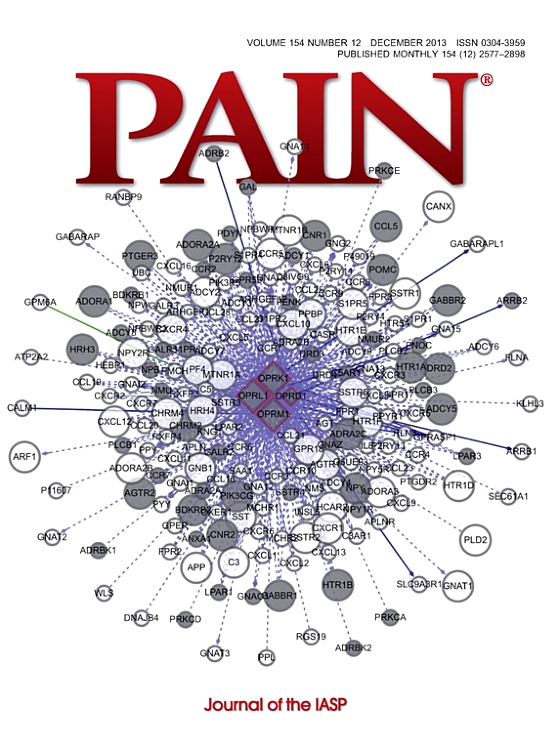Factors associated with opioid craving, opioid intake, and opioid misuse in patients with chronic pain: insights from an ecological momentary assessment study.
IF 5.5
1区 医学
Q1 ANESTHESIOLOGY
引用次数: 0
Abstract
Many patients with chronic noncancer pain (CNCP) are prescribed opioid medication. However, concerns have been raised about the use of high opioid doses and the misuse of opioids in these patients. Research is needed to better understand the factors that influence day-to-day opioid intake patterns and opioid misuse behaviors in patients with CNCP. The first objective of this study was to examine the contribution of pain intensity, psychological factors, and physical dependence symptoms to daily opioid craving and opioid intake in patients with CNCP. The contribution of these factors to opioid misuse was also examined. In this ecological momentary assessment study, patients with CNCP prescribed short-acting opioids completed diaries, in between opioid doses, for 10 consecutive days. Diaries assessed a host of pain, psychological, and opioid-related variables. Diaries also assessed total daily morphine equivalent doses (MED) used by patients. Multilevel analyses indicated that intra-day increases in pain intensity, negative affect, catastrophizing, and withdrawal symptoms were associated with higher opioid craving (all P's < 0.05). Day-to-day increases in pain intensity, catastrophizing, and craving were associated with greater opioid intake (ie, MED) (all P's < 0.05). Patients' daily opioid craving contributed to daily opioid misuse even after accounting for other daily variables (P < 0.05). Our findings provide new insights into the factors contributing to daily opioid craving, opioid intake, and opioid misuse among patients with CNCP. Interventions targeting these factors could potentially prevent opioid dose escalations and opioid-related harms among those maintained on opioid therapy.慢性疼痛患者中与阿片类药物渴望、阿片类药物摄入和阿片类药物滥用相关的因素:来自生态瞬时评估研究的见解
许多慢性非癌性疼痛(CNCP)患者服用阿片类药物。然而,人们对这些患者使用高剂量阿片类药物和滥用阿片类药物表示担忧。需要进行研究以更好地了解影响CNCP患者日常阿片类药物摄入模式和阿片类药物滥用行为的因素。本研究的第一个目的是研究疼痛强度、心理因素和身体依赖症状对CNCP患者每日阿片类药物渴望和阿片类药物摄入的影响。这些因素对阿片类药物滥用的贡献也进行了审查。在这项生态瞬时评估研究中,服用短效阿片类药物的CNCP患者在阿片类药物剂量之间连续10天完成日记。日记评估了一系列疼痛、心理和阿片类药物相关的变量。日记还评估了患者每日使用的吗啡当量剂量(MED)。多水平分析表明,白天疼痛强度、负面情绪、灾难化和戒断症状的增加与更高的阿片类药物渴望相关(P < 0.05)。疼痛强度、灾难化和渴望的日常增加与阿片类药物摄入(即MED)增加有关(P < 0.05)。即使在考虑其他日常变量后,患者的日常阿片类药物渴望也会导致日常阿片类药物滥用(P < 0.05)。我们的研究结果为CNCP患者每日阿片类药物渴望、阿片类药物摄入和阿片类药物滥用的因素提供了新的见解。针对这些因素的干预措施可能会预防阿片类药物剂量升级和阿片类药物相关危害。
本文章由计算机程序翻译,如有差异,请以英文原文为准。
求助全文
约1分钟内获得全文
求助全文
来源期刊

PAIN®
医学-临床神经学
CiteScore
12.50
自引率
8.10%
发文量
242
审稿时长
9 months
期刊介绍:
PAIN® is the official publication of the International Association for the Study of Pain and publishes original research on the nature,mechanisms and treatment of pain.PAIN® provides a forum for the dissemination of research in the basic and clinical sciences of multidisciplinary interest.
 求助内容:
求助内容: 应助结果提醒方式:
应助结果提醒方式:


